On April 22, the immersive space art exhibition “Like the Dead” brought by architect Liu Yichun, artist Qiu Anxiong, and musician Jin Wang opened in an interactive form at the “Bianyuan” on the bank of the Huangpu River and Lujiazui APSMUSEUM. The heavy industrial memory on the Yangpu Riverside and the vitality of Lujiazui in Pudong across the river constitute a “polyphony.”
When expounding the relationship between the two locations and the name of the exhibition, Li Xiangning, the curator of the exhibition and dean of the School of Architecture and Urban Planning of Tongji University, said: “‘The dead like this” describes the relationship between space and time. Bringing the sense of’ruins’ that spans time from the’side garden’ to the art gallery, interacting with the existing riverside images and the artist’s works, forming a connection between the existence and the other.”

Exhibition site APSMUSEUM “The Dead”
Standing on the second-floor terrace of the “Border Garden” on the Yangpu Riverside, you see the river slowly flowing in front of you. A musician is playing the oboe, and the urban landscape is pushed into the distance. The city in the frame and the power plant in the distance are in the building. Among the ruins and new landscapes, “The son said on the Sichuan:’The dead are like a husband, and will not give up day and night’.” It seems to have become a footnote to the scenery.
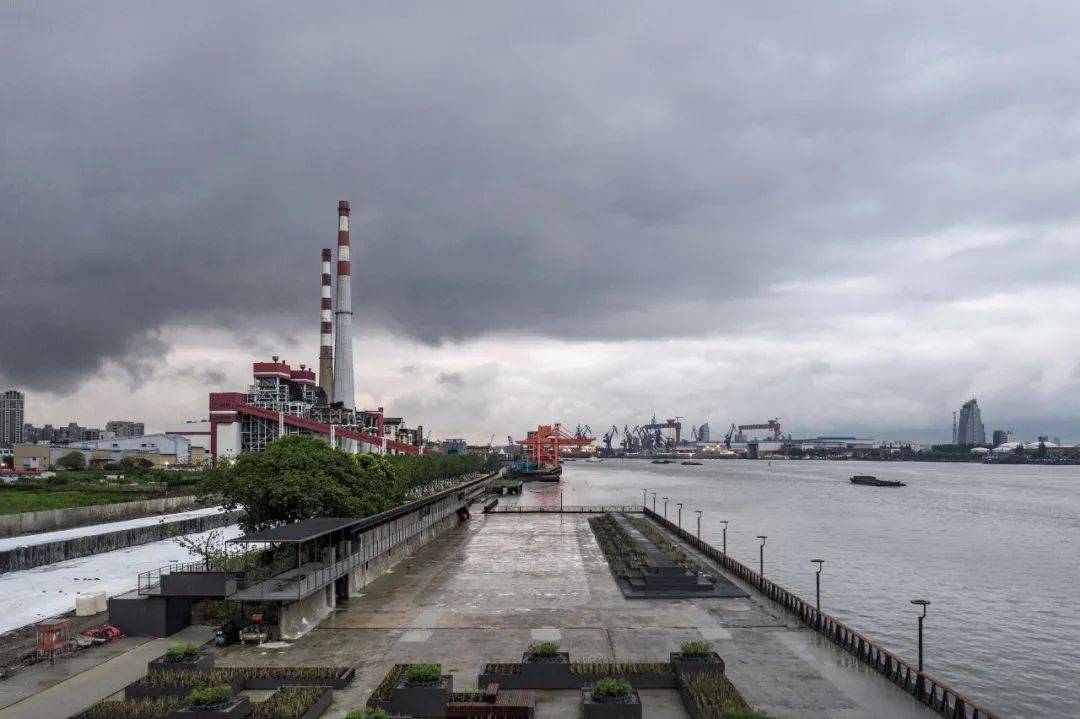
Standing on the “side garden”, you can see the Huangpu River and the old power plant.
In the hinterland of Lujiazui, Pudong, inside the APSMUSEUM in the center of Lujiazui, walk into a long corridor, where the scenes on the “side garden” are transmitted on a long wall and a long screen. Here, Liu Yichun reconstructs the real space on the riverside in an abstract way, while Qiu Anxiong’s creations give the city’s daily scene a surrealism through a series of gradually suspended and weightless people and objects. light”.

In APSMUSEUM, the real-time transmission image of Yangpu Riverside is superimposed on the image of people walking in the museum and Qiu Anxiong.
The images here are transmitted in real time to the display screen of the “Border Garden”, superimposed on the ruined scenery and the hustle and bustle, connected by an immersive installation, like two containers, carrying the history of Shanghai’s industry and the prosperous present, and the works of art are also in between. It reminds the state of people and things in the process of urbanization.

The audience clicks the screen, and the animation on the screen floats to the sky.
“Border Garden” and APSMUSEUM, the superposition of reality and virtuality
The “Border Garden” is not a garden, but a ruined wall that was originally used by a coal dock to resist coal from falling. In 2019, architect Liu Yichun borrowed from the construction rules of Chinese gardens and transformed it into what it is today. The “side garden”.
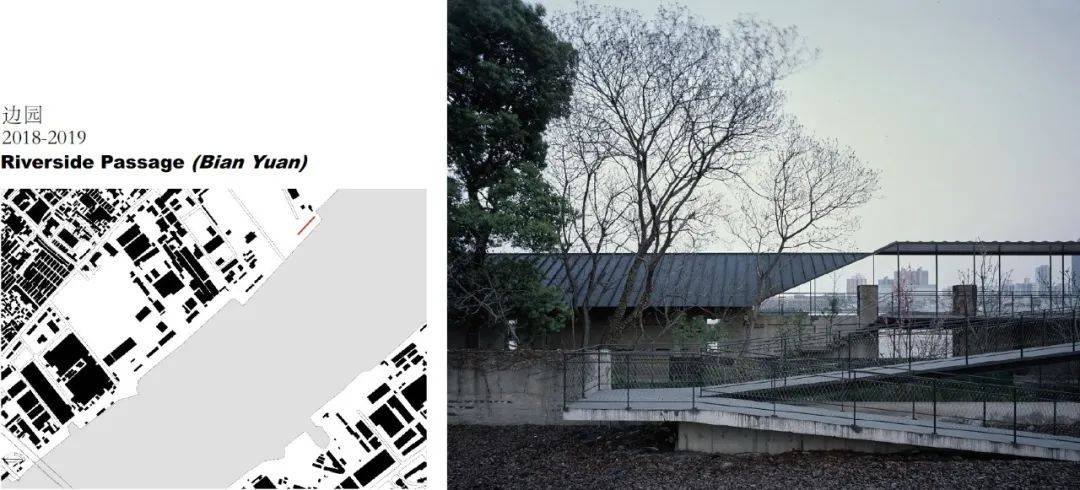
After the transformation, the wall of the coal terminal that resisted the fall of coal became a “side garden”.
In fact, there were two walls here. After the other wall was crushed, the fragments of the building were thrown between the pier and the flood wall. Over time, the soil entered the cracks, and weeds and trees grew. The wall underneath, together with the fragments of another wall that shattered, formed a landscape-like whole. Although it has been transformed into a “landscape”, it still has a sense of barrenness. It is precisely this kind of landscape that conveys the sense of time of the industrial history along the Huangpu River, and also conveys the geography of Yangpu Riverside that was relatively located on the fringe of Shanghai in the past. feature.
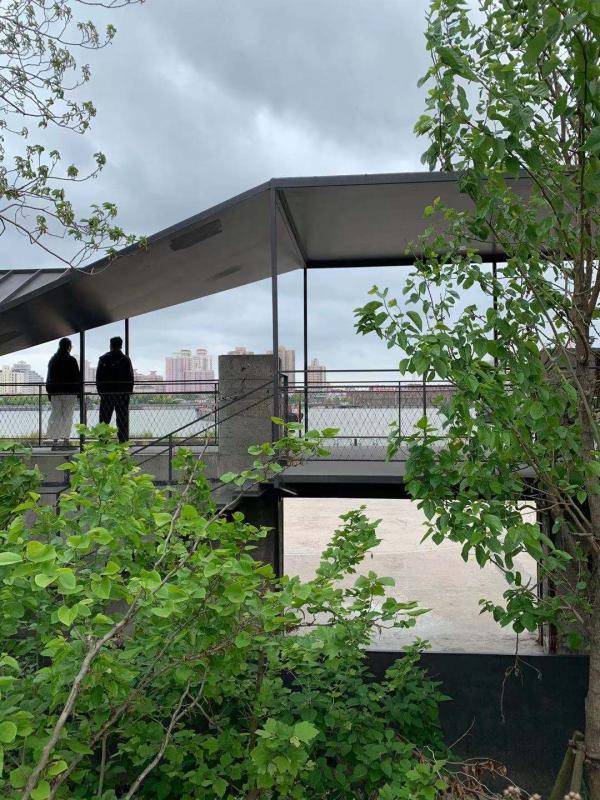
“Bianyuan” facing the Huangpu River
In an exclusive interview with The Paper, Liu Yichun recalled coming to the site north of the Yangpu Bridge for the first time. “(They) existed like some kind of ruins, because they were left unused for a long time, the beams and columns had been damaged, and some soil fell on it. With weeds and even trees, it seems that these ruins are returning to nature in some way.” Liu Yichun said, “We are going to rebuild on the ruins today, and to some extent, we are terminating the process of returning to nature. , What does this termination mean to the ruins?”

Before the renovation, it almost returned to the natural site.
Liu Yichun used the words “ruins” and “trace” many times when he talked about “Bian Yuan”. “The same thing can be understood as either a’ruin’ or a kind of’trace’. When the ruins are transformed When it is a part of the new building, it becomes a trace on the original site and solidifies it in a new way. So I think these are two different understandings of time. The’ruin’ seems It is a kind of disappearance, and the’trace’ seems to be a kind of preservation.” “I want this place to be remodeled, but the barren scene of the original site and urban life can be retained to a great extent.”
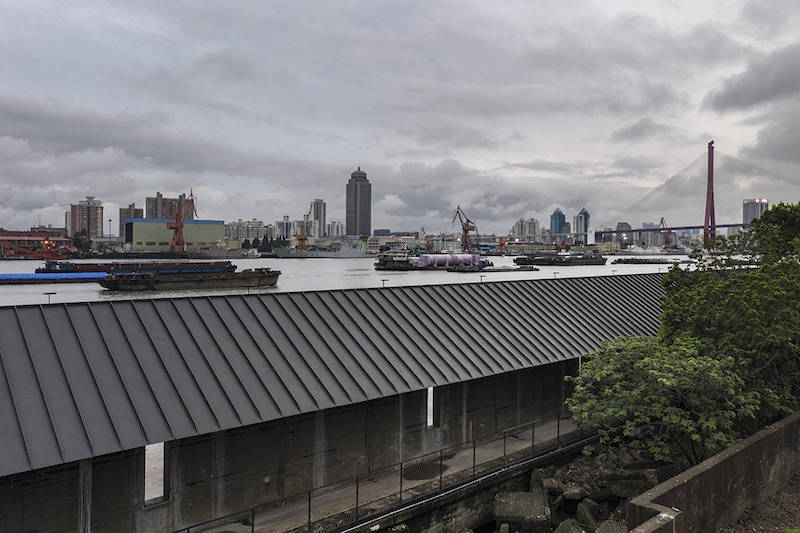
The “Border Garden” of Yangpu Riverside. ©Tian Fangfang

The original site of the reconstructed “Border Garden” and the existing weeds and trees constitute the landscape. ©Tian Fangfang
APSMUSEUM is a “non-profit” art space founded by Art Pioneer Studio and its founder Wang Bin. It is also an experimental space. Although it is located in a shopping mall, it does not hesitate to pursue its artistic pursuits and invites Italy Architect Stefano Boeri is doing space design (as academic consultant for this exhibition), and the opening exhibition will be held in November 2020. “Space Leader” also invited many international big-name artists to participate. Prior to this, Xinzhifeng Art Institute undertook the curatorial, full supervision, and overall control of the permanent public art works of Yangpu Riverside. For issues such as public art, the connection between art and the space environment, we have been doing interdisciplinary integration and exploration.
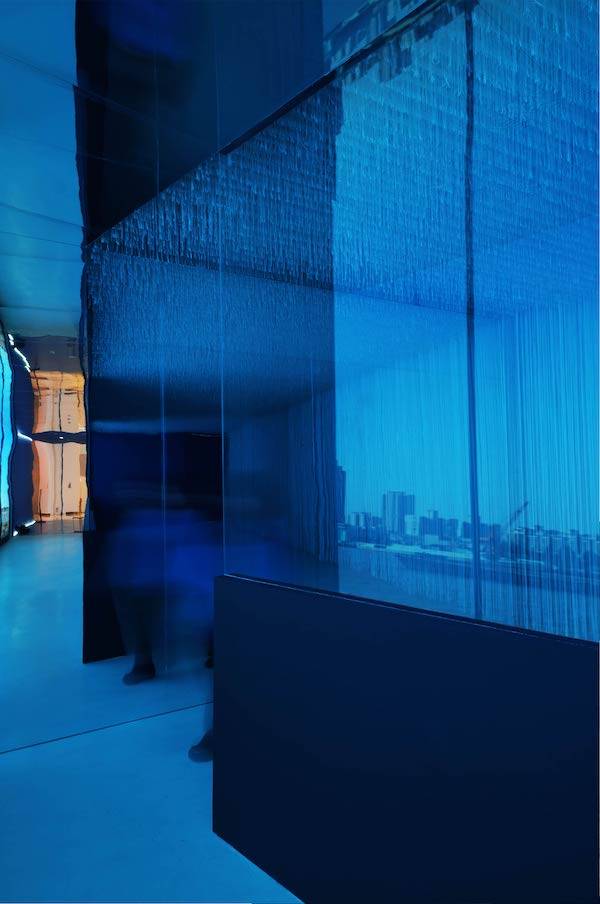
APSMUSEUM “The Dead” Exhibition
APSMUSEUM is also a product of the development of the times. The Lujiazui area where it is located is a product of the development and opening up of Pudong. The urban issues it focuses on are also the result of changes in people’s lifestyles in the process of urbanization.
In this exhibition, APSMUSEUM is created as a surreal space. From the perspective of architectural intervention, Liu Yichun links the two places. The long walkway and screen in APSMUSEUM form a physical echo with the long wall of the “side garden”. . The people and objects in Qiu Anxiong’s silhouette animation slowly leave the ground and float to the sky. People walk in it, as if they are also a kind of garden.
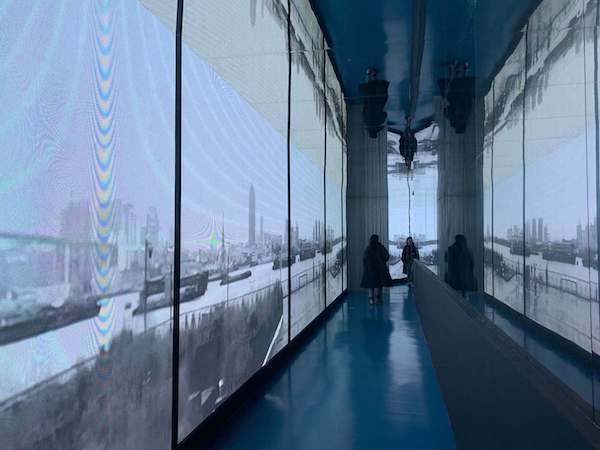
In the APSMUSEUM in the center of Lujiazui, walk into a long corridor, where the scenes on the “side garden” are transmitted on a long wall and a long screen.
This space corresponds to the real space of the “Border Garden”. The superimposition of reality and virtuality forms an unfamiliar experience of the familiar daily urban space. “The border garden in the material world of the riverside and the imaginary border garden constructed from the images in the art gallery are connected across time and space. The border garden of the art gallery reflexively implants the real existence on the riverside through data transmission. This border garden It is the image twin of Bibian Garden, and it is the interpretation and reconstruction of the meaning of Bibian Garden.” Li Xiangning said.
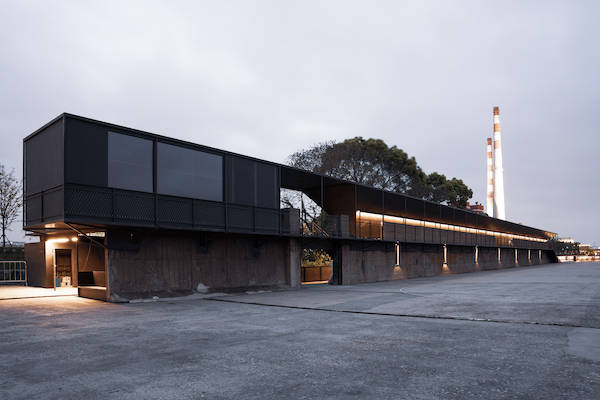
The “Border Garden” renovated by Liu Yichun
Liu Yichun, Qiu Anxiong, and Jin Wang have cross-border cooperation with “literati consciousness”
The first time I saw Qiu Anxiong’s work was at the 2006 Shanghai Biennale. At that time, he made an animation “New Mountain and Sea Classics I” in the ink language of propylene and water transfer, which talked about the energy problems in urban development without too much. His language resonated with many people at that time.
Since then, he has successively completed “New Book of Mountains and Seas II” and “New Book of Mountains and Seas III” in 2009 and 2017, which are related to the creation time, and his focus ranges from “energy conflict” to “space and biotechnology”. Until the discussion of reality and virtuality in the Internet age. It seems that everyone is in the “New Mountain and Sea Classic” of the city, and every “weird and chaotic” that appears in it is also a common object around us. In the “urban landscape” with the image of the ancient Chinese, it is oneself that is seen.

“New Classics of Mountains and Seas III”, 2013-2017, ink and wash animation

“New Classics of Mountains and Seas III”, 2013-2017, ink and wash animation
Qiu Anxiong was born in 1972. From the 1970s to today, the changes in Chinese people’s lives are the greatest and most peculiar in history-from a farming society that relies on land for food, into an agriculture, industry, post-industrial consumption, information Social fusion. The plots of some science fiction novels that have appeared have become realities within reach of the moment. Many things can be solved on a smart phone, as long as there is a network cable to the outside world. Being able to participate in major social events while lying on the sofa makes everything easier and easier, and life becomes “lighter” unknowingly.
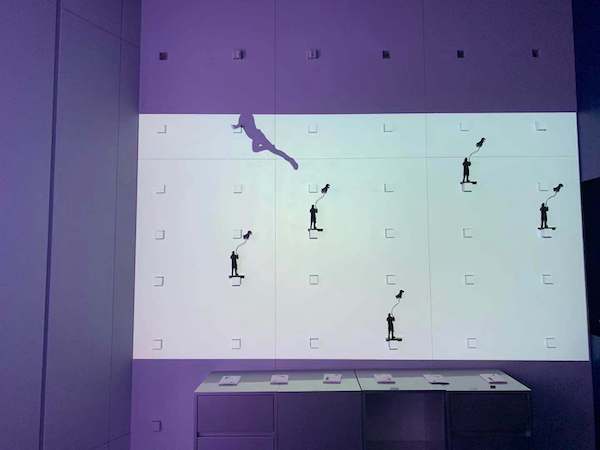
exhibition site
Qiu Anxiong’s customized video works for this exhibition make people feel a kind of “light”. The silhouette of the little girl walked into the screen, blowing away the soap bubbles in her hand, the puppy floated away from gravity, and when touched again, the person would be gently lifted… but it was as light as a piece of paper, without itself His face has been separated from the real life.
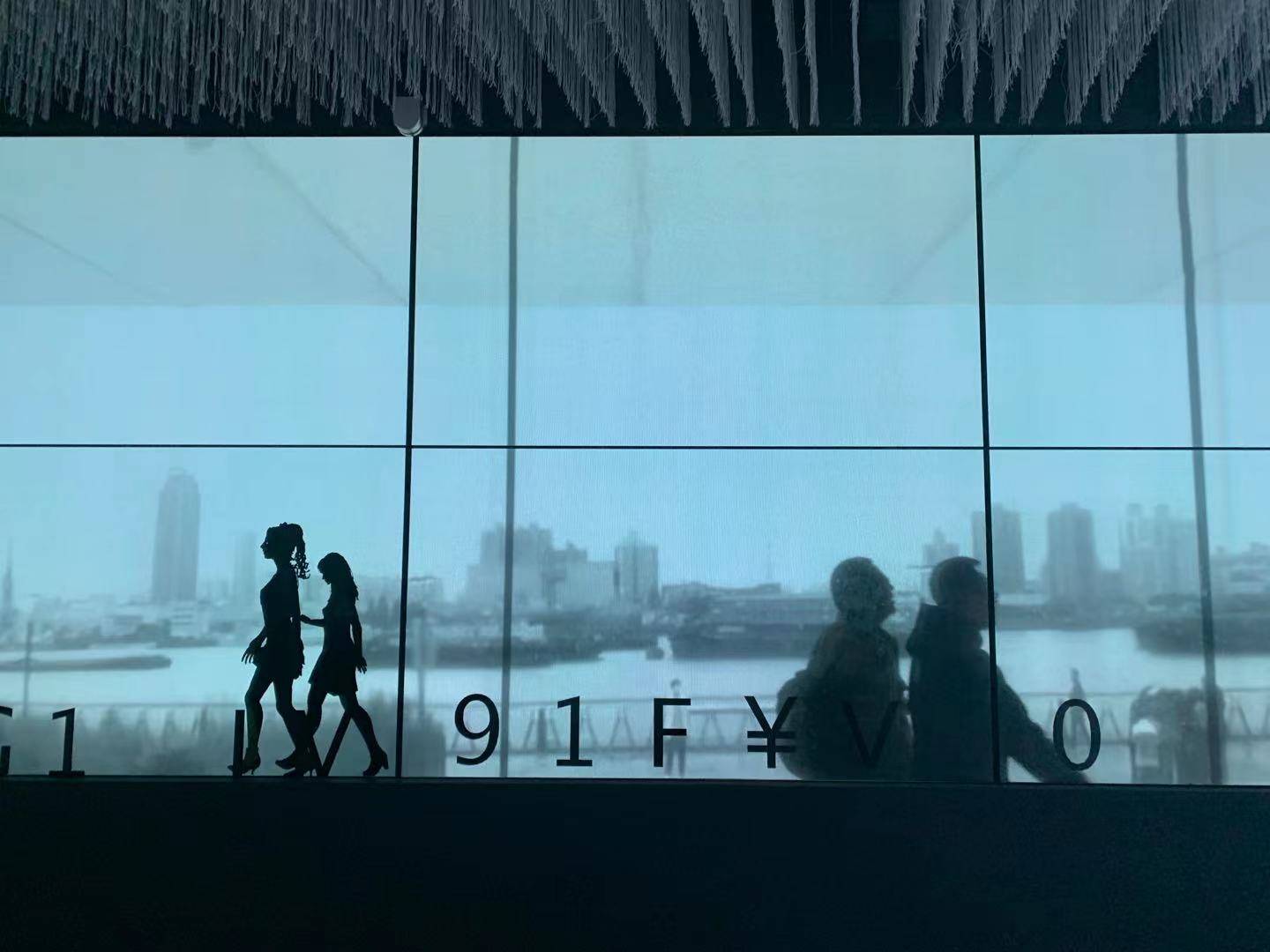
exhibition site
“The Internet has constructed a weightless world. It is not only the weightlessness of life, but also the weightlessness of our feelings about time. Fragmented information shatters the continuity of time. Only what is happening now can attract the attention of the Internet public. Yesterday’s events were forgotten. The shorter and more stimulating information in the online society, the more effective. Long and rational knowledge is rarely sought after. In the sense of time that was forgotten yesterday, we have lost the depth of time, let alone history. I feel that the weight of time gradually disappears in this weightless era.” Qiu Anxiong said.
Recalling the times we experienced, mobile phone screens have changed the way of life of many people. The social media platform is like a gluttonous behemoth that can swallow anything as long as it can bring traffic. Everyone’s lives are involved in this endless national carnival performance.
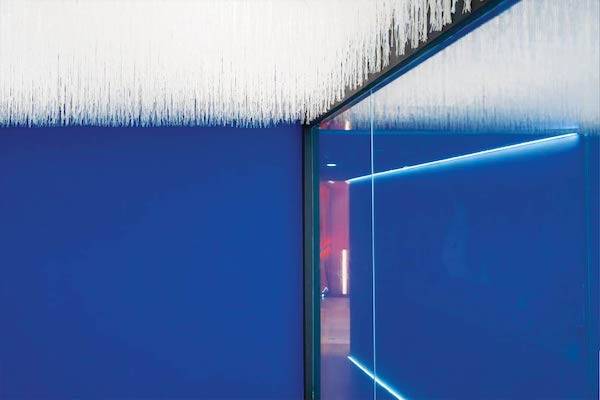
APSMUSEUM “The Dead”
The image of Qiu Anxiong, together with the excitement of the opening of the APSMUSEUM exhibition, was projected into Liu Yichun’s “Border Garden” building, superimposed with the passing ships on the Huangpu River and the lonely music. The sense of ruins and weight of the building itself makes the “lightness” of contemporary life even more “empty”.
In virtual and reality, one of the two musicians plays the oboe in the “Bian Yuan” and the other plays the viola in APSMUSEUM, separated by a river, the two are surrounded by music dialogue. The music they played was from Jin Wang. This name may be relatively unfamiliar in the field of visual art, but in the field of music, his chamber music works have been performed in concerts such as the Shanghai Spring International Music Festival and the Hong Kong Arts Festival many times, and he has cooperated with Yang Fudong and Qiu Anxiong many times. . “Most of the music has specific performance occasions, but this time it is two different spaces. Playing music at the same time also gives a lot of room for imagination. It also expresses’the dead are like their husbands, not giving up day and night’ The concept of time and space.” Jin Wang said.
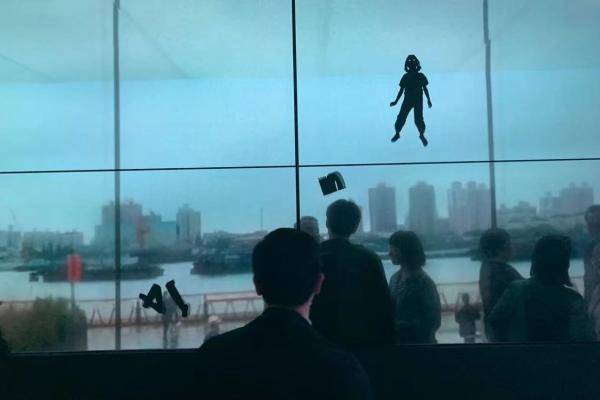
exhibition site
Although art, music and architecture tell their own stories, art is the ultimate carrier. On the opening day, there was also a forum where the curator and three artists talked about the inspiration of the exhibition from different angles. Li Xiangning talked about the role of art in urban renewal based on the connection of the Huangpu River and the Urban Space Art Season. Liu Yichun talked about his architectural practice with the theme of “The Boundary of the Art Museum”, and using the “Border Garden”, he explained how the art of the art museum is integrated into the public behind. And Wang Bin’s original intention of doing public art and APSMUSEUM was to let the artists in the “white box” be understood by more people. Many of his practices have also worked with field and cross-field cooperation. This time he joined the interaction between technology and art. .

Opening Forum
It is reported that in June this year, the “Bianyuan” branch will move to the Anaya Lonely Library in Qinhuangdao. It will face the sea and tell the story of “One City, One Story”. There will be more touring exhibitions in the future, and different spaces will bring difficulties. The same experience.
(This article is from The Paper. For more original information, please download the “The Paper” APP)

























































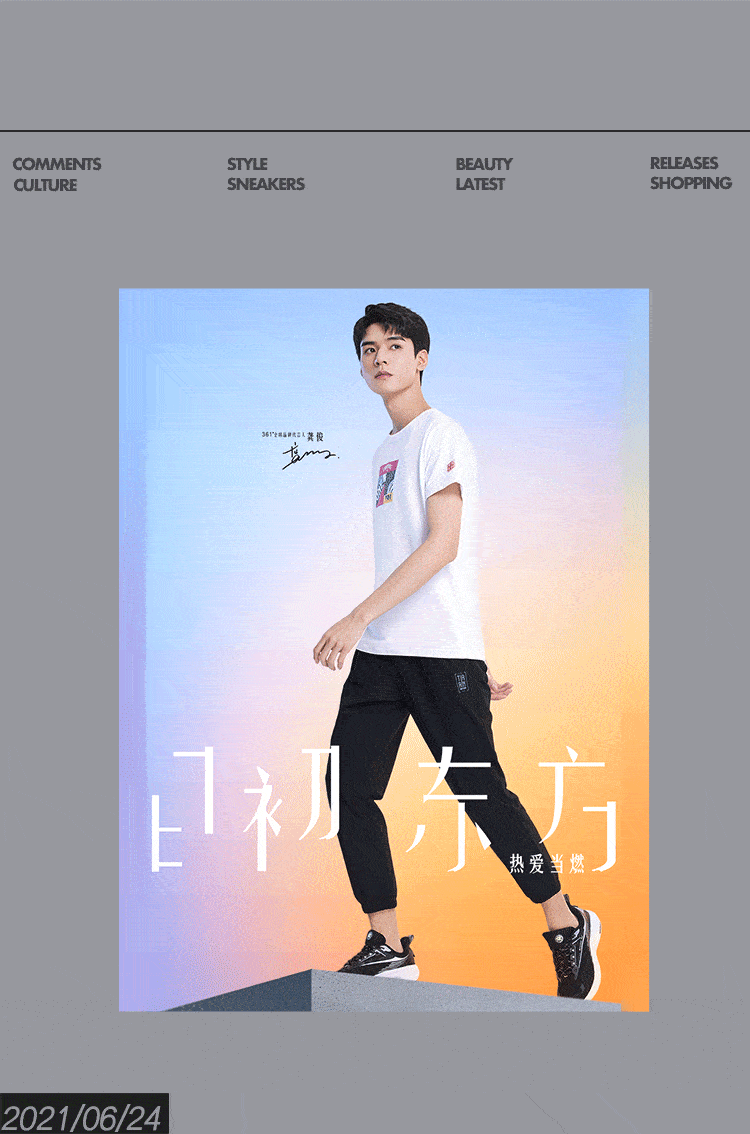



You must log in to post a comment.